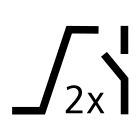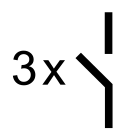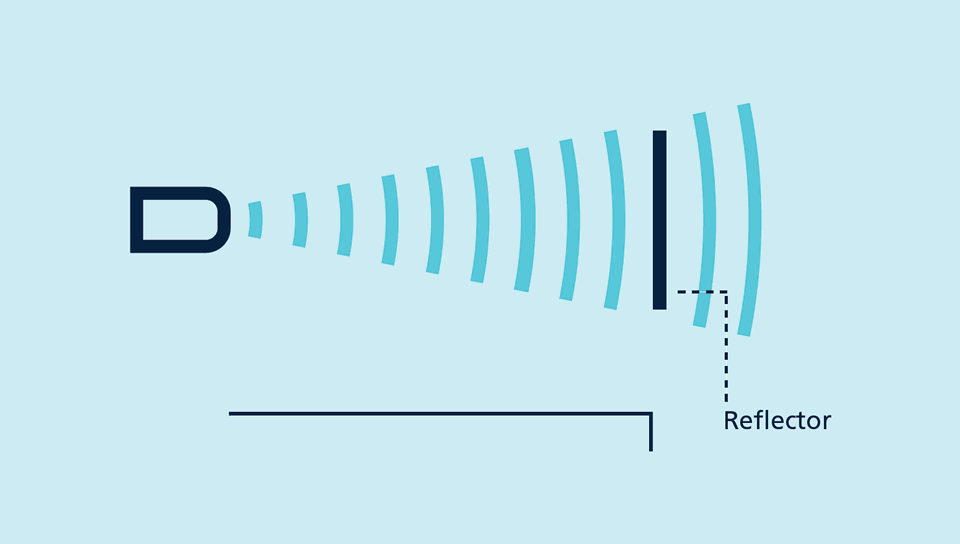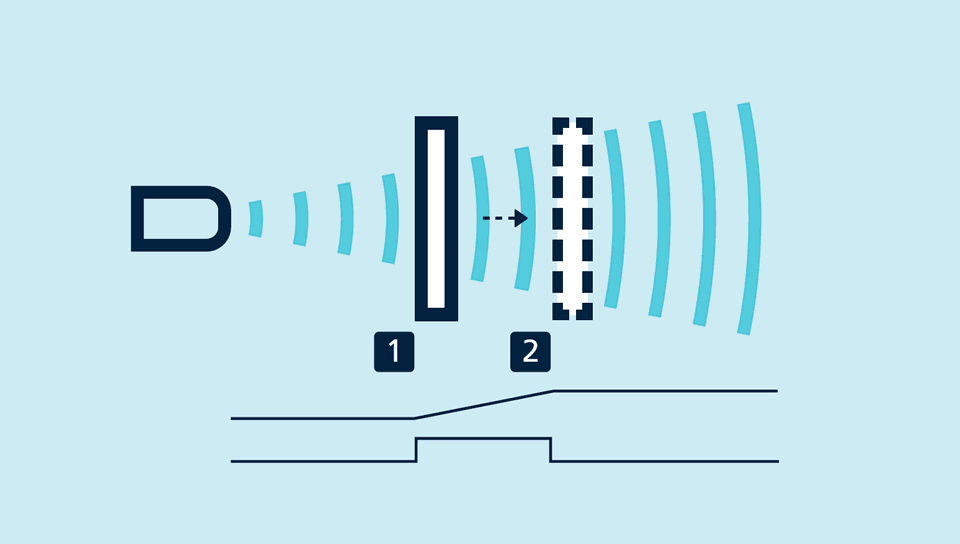With a housing length of only 55 mm
nano sensors with switching outputs are the smallest ultrasonic sensors inside the M12 threaded sleeve on the market. Analogue sensors are 60 mm long. nano has a 4-pole M12 circular plug and are taught via pin 2.
For the nano sensor family
there are 2 output stages and 2 measuring ranges available:
 |
1 Push-Pull-switching output, in pnp or npn circuitry with IO-Link interface |
 |
1 analogue output 4–20 mA or 0–10 V |
The temperature compensation
of the sensors profits from a significant improvement. The sensors reach their operating point only 45 seconds after activation of the operating voltage. We now compensate for the influence of self-heating and installation conditions. This brings improved precision shortly after activation of the supply voltage and in running operation.
New! With the internal alignment assistance
the sensors with Push-Pull switching output can be optimally aligned to the object during installation.





































